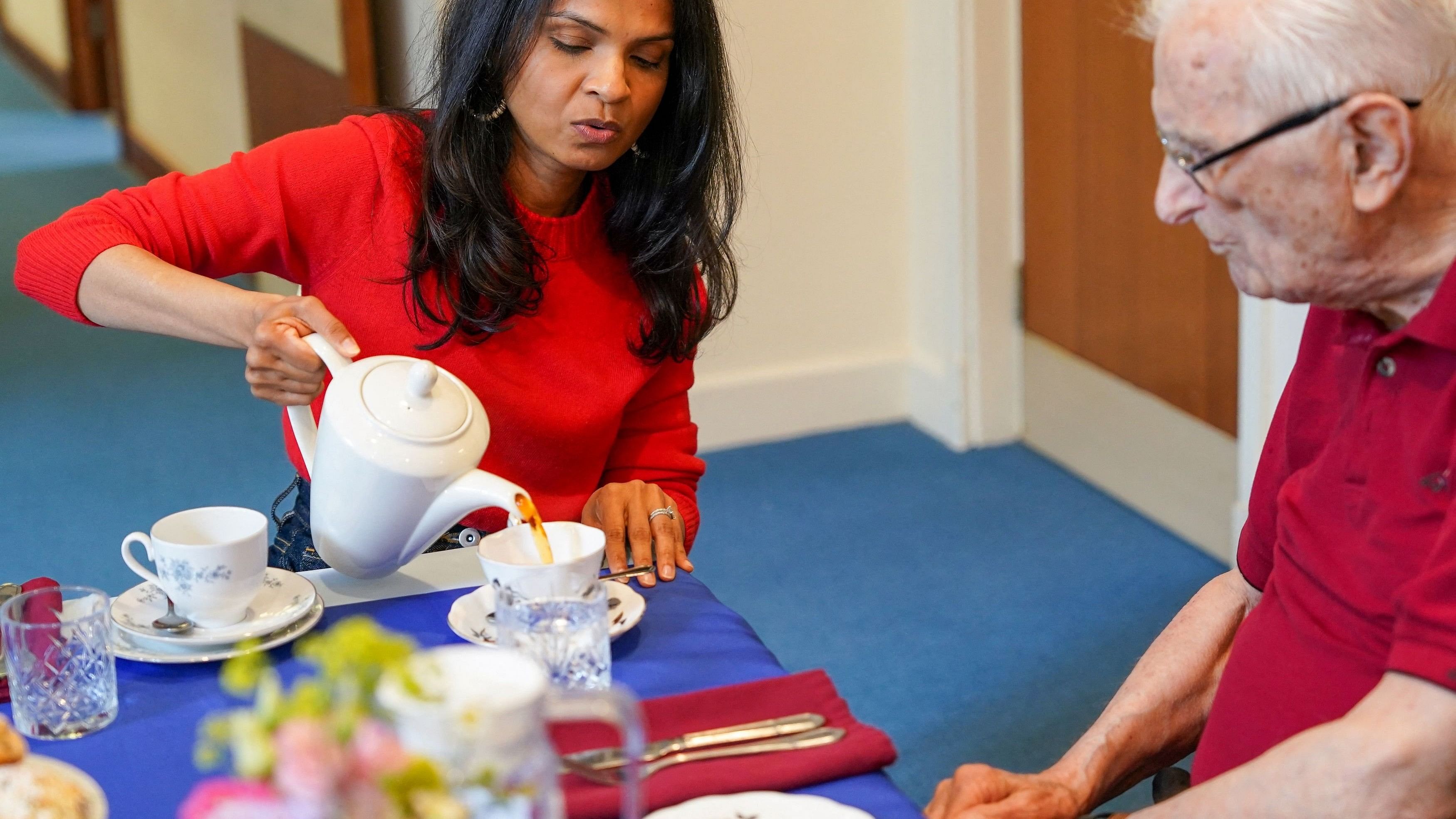
Akshata Murthy, wife of former UK PM Rishi Sunak, pours a cup of tea. Image for representational purposes.
Credit: Reuters Photo
By Howard Chua-Eoan
When I was taking the “Life in the UK” test to qualify for British permanent residency, one of the questions I feared might pop up involved tea. Specifically, “What is high tea?”
Having lived in the US for decades, I assumed it was the British ritual of tiered serving towers of sandwiches, scones and cakes in succession, with a nice pot of tea somewhere on the table. The towers were high, right? And it was all kind of high class — including steep prices at hotels like Claridge’s (£90 or more than $100 a person).
And, as an American Anglican, I assumed high was the same category as incense-laden, Latin-spouting high church masses. Tourists would talk about going to high tea as part of an entertainment package centered around the musical Wicked, which has a song called “Defying Gravity.” Isn’t that just the perfectly altitudinous lyric?
Well, I would have gotten the answer wrong.
What I thought was high tea is properly called afternoon tea. As Henrietta Lovell, founder of the Rare Tea Company, explains in her memoir Infused: Adventures in Tea: “High in this regard actually had to do with the elevation of the drinkers’ bottoms, or at least the seats on which they sat.”
Afternoon tea was enjoyed while seated on a sofa in the drawing room. High tea was imbibed at the dining table (which has higher chairs) usually in the late afternoon or early evening, with something more savory — hence “tea” in some parts of the UK is what a lot of the English-speaking world calls “supper.”
The confusion, of course, involves the British caste system. Working-class folks partook of high tea emerging from their day’s labors. Meanwhile, people with a surfeit of leisure sat down to afternoon tea around 3 p.m., with dainty sandwiches and snacks to tide them over to dinner at 8.
In the UK, it remains an important distinction: Luxury hotels make it gravely clear that they don’t serve high tea (even if some of their younger PR folks make the mistake while promoting events). And, no, afternoon tea is not low tea.
Is it worth all the trouble explaining the distinction? It’s already taken me several paragraphs, without even mentioning the Duchess of Bedford in the 19th century who is credited with beginning the tradition of afternoon tea. (Lovell believes the practice was already widespread by then and simply attached itself to an aristocrat lofty enough to make it even more fashionable.)
I’ve written before about the travails of tea in Britain and how it’s losing ground to coffee, pun unintended. Tea used to be a more cerebral drink, with a connoisseurship that had oenological breadth. Not so nowadays with the proliferation of tea bags and a dizzying array of tea smoothies and boba.
Today, coffee has encroached on tea’s intellectual high ground in Britain, with a whole industry growing up around the paraphernalia of home brewing (way beyond Nespresso capsules). Meanwhile, consumers can’t get beyond spending the minimum on tea bags — microplastics and all. This penny-pinching is practiced by even the better restaurants and hotels that charge large sums for the British tea ceremony.
I say — with apologies to Michele Obama — when they go low, we go high.
Let’s stop with the disdainful social distinctions that have turned the word “high” lower class for tea in Britain. There’s no real tradition in the snobbery: Hotels and restaurants didn’t really offer the indulgent, high-calorie versions of afternoon tea until the 1970s — long after the Duchess of Bedford left the scene.
Hers were sedate if exclusive little get-togethers, not the high-margin business to sop up customers in the post-lunch, pre-dinner hours. It’s so profitable that some places start afternoon tea at 11 a.m.
The associated hot beverage should also play more of a central role along with cakes and scones. Heighten the experience with the very best loose-leaf teas — some of which are produced in dedicated villages in impoverished countries.
It’s a way to share the wealth: We may have high prices with high tea, but let it be accompanied by a higher-quality drink to enhance the gustatory experience as well as heightened social imperatives.
Having schooled myself in British practice and terminology, I noticed that Lovell has organized a charity tea (I’ll leave the pun to you) next month at Claridge’s to raise funds for scholarships in Malawi. It’s billed as a high tea. I asked, “Don’t you mean afternoon tea?” No, she said.
This is a real high tea. It’s scheduled for the late afternoon and features a substantial menu, including contributions from Santiago Lastra, chef of the Michelin-starred Kol, and from Richard Hart (who is married to Lovell), founder of Hart Bageri in Copenhagen.
Let’s just call all of it high tea. The rest of the tea-drinking world will be grateful if Britain switches back to English.